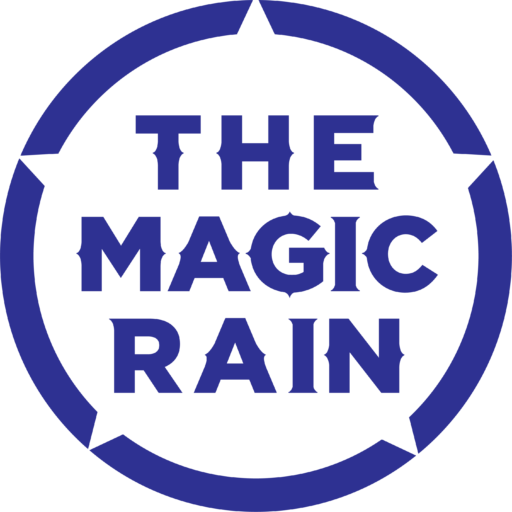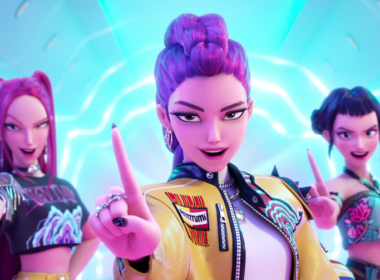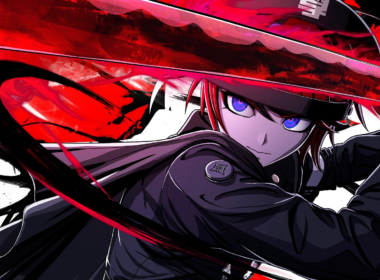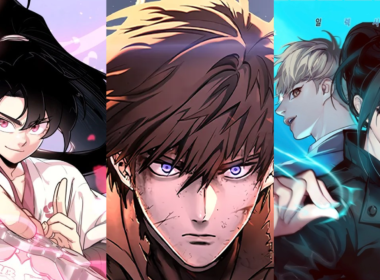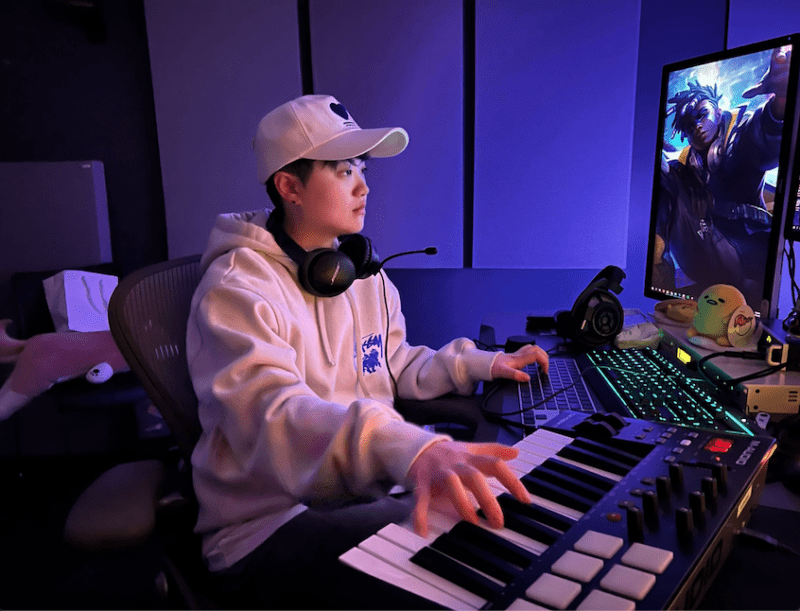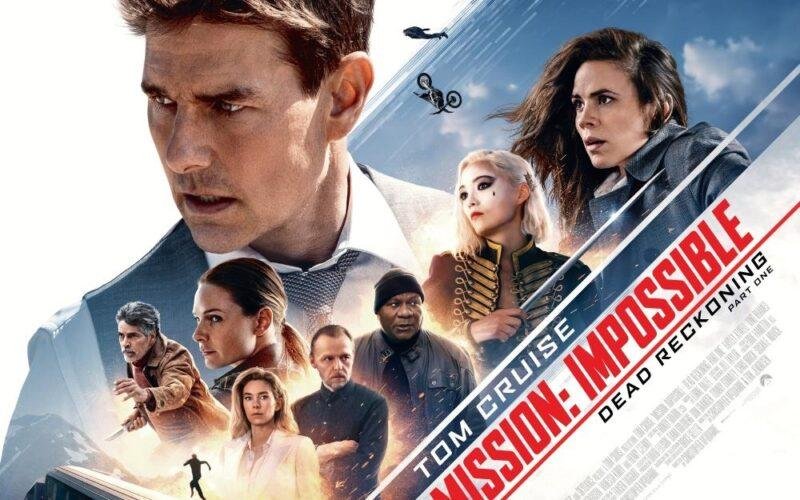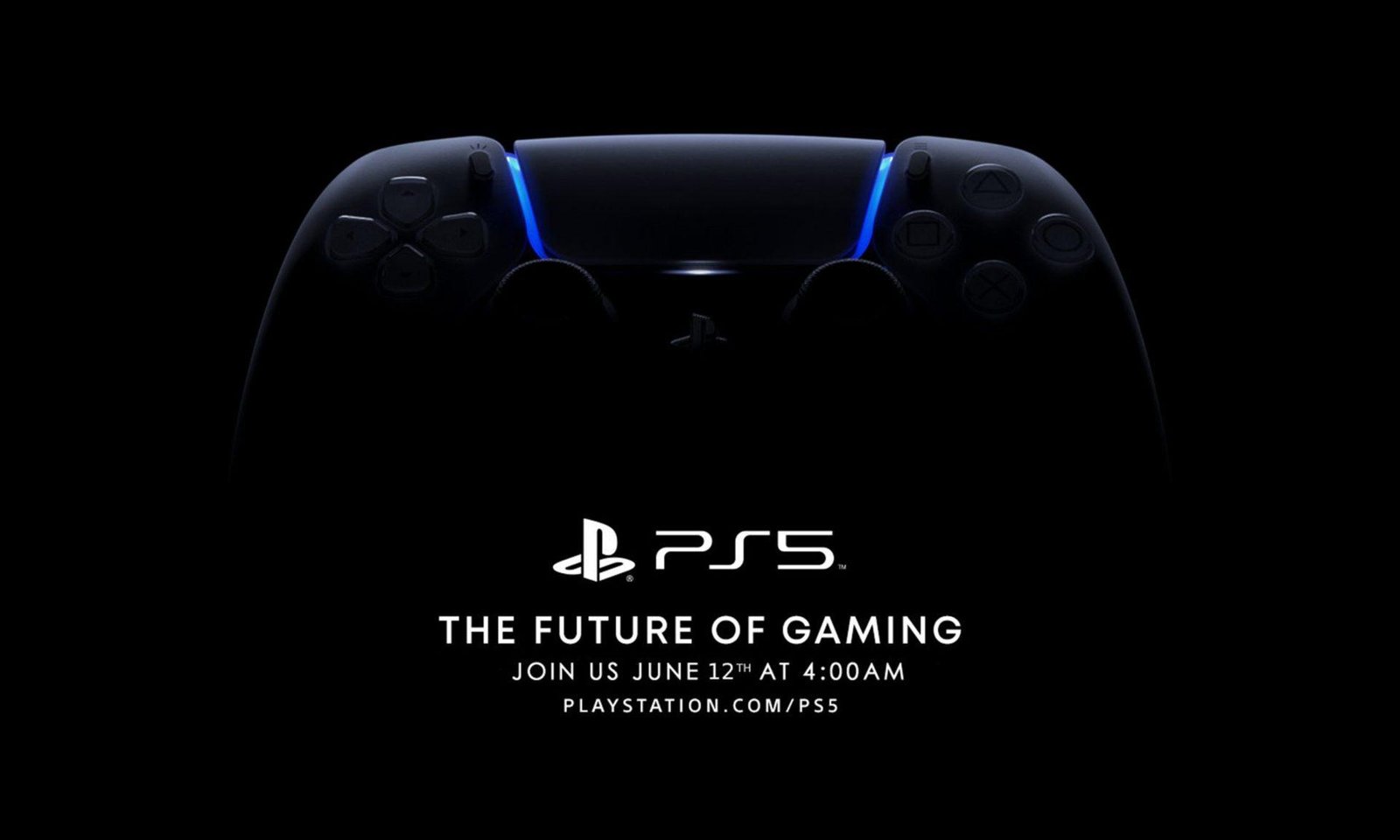Good sound design is an integral part of any game’s success, and Riot Games’ extensive catalogue is no exception. Plenty of work goes into creating these in-game sounds, from the audio cues that help players to make split-second decisions in a League of Legends teamfight, to the atmospheric soundscapes that bring the world of Runeterra to life in titles such as Ruined King: A League of Legends Story.
THE MAGIC RAIN recently had the opportunity to speak to Sandy Zhou, a sound designer at Riot Games, who was able to share her journey and experience in the game industry with us here.
The following interview has been edited for clarity.
What inspired you to pursue sound design as a career?
My passion for interactive audio and music began during my teenage years, fueled by my strong interest in gaming since childhood, which I quickly picked up. My work is a perfect fusion of science, technology, and art.
Growing up with a piano teacher as my mother, I developed a profound sensitivity to various sounds. I started learning piano at the age of four and achieved the tenth grade by the time I was twelve, which laid the foundation for me to pursue a career in music and sound. Out of curiosity, I also ventured into learning other instruments like the guitar and drums. I studied harmony, ear training, and various other music subjects to equip myself for a career in music. During high school, while serving as the president of the street dance club, I inadvertently discovered my passion for music production and designing soundscapes for performances, teaching myself many aspects of music production along the way.
Eventually, my path took clearer shape when I discovered Berklee College of Music, a renowned institution that has nurtured many world-famous musicians. At the age of 21, I packed my bags and moved to Boston, USA, to study at Berklee College of Music. Influenced by my peers and professors, my passion for music production gradually evolved into a love for game music and sound, particularly sound design and interactive audio. This led me to pursue a dual degree in Electronic Production and Sound Design, as well as Film Scoring.
The idea of becoming a game sound designer sprouted during the Game Developer Conference in the spring of 2019. The event provided me with numerous insights, and I observed that those involved in game audio were young, passionate, and eager to share their experiences. They were friendly and offered ample opportunities for industry networking. Attending several professional lectures on game audio made me realize that it was precisely what I wanted to do. Though at that time, I lacked a clear understanding of the job scope and what it would entail, I had an intense urge to pursue art within the gaming industry.

During that summer, I seized the chance to join Tencent TiMi Studios’ audio department in Shanghai, specifically with the Honor of Kings team. There, I honed my skills in creating interactive sound and music designs. While I didn’t create music myself, I delved into the logic behind designing music playback in games and how to utilize equipment to create sounds. Additionally, I gained knowledge about game engines and middleware for audio processing, as well as how to collaborate with vendors to meet production deadlines. This invaluable experience marked the true beginning of my journey into sound design.
During my time in college, I received two scholarships. One was the Game Audio Women’s Scholarship from Berklee, and the other was a scholarship from the Game Audio Network Guild (G.A.N.G.), which is recognized nationwide in the US. These scholarships provided great opportunities for me.
As part of the G.A.N.G. scholarship, I had the chance to have a conversation with renowned Hollywood sound designer Scott Gershin, who worked on films like Pacific Rim. He has his own studio, and after a few enthusiastic video meetings and a sound test, he expressed his liking for my work. Subsequently, I joined his team and worked on significant projects ranging from AAA games in the United States to Tencent and NetEase games in China.
Since then, I have been designing audio for PC games, console games, and mobile games for various game studios in China and the United States.
Could you give us a brief overview of your day-to-day job as a sound designer at Riot Games?
I specialize in creating sound effects and music for interactive experiences along with designing the behaviors that audio assets will assume in response to the myriads of decisions that players could be making in real-time during the game. I used to be a sound designer on the skin team for League of Legends.
I believe that sound and music are very similar in that they both require references. I have led the audio design for multiple best-selling skins at Riot Games. We create a “one sheet” that includes key words and video links of similar styles as references. This makes it easier for different designers to collaborate and create audio that aligns with the same thematic. By following this approach, we ensure consistency in the audio design process and create a unique and cohesive sound experience for each thematic.

To understand the original sound design of a champion, I will start by exploring the original design concept and then incorporate it into the new thematic creation. After establishing the direction and style, I will proceed with recording and creating the basic foundational sound sources, which serve as the building blocks for the overall audio design. These foundational elements are essential in creating a strong and cohesive sound palette that can be further manipulated and combined to achieve the desired effects. By meticulously crafting these fundamental sounds, I lay the groundwork for the subsequent stages of the audio design process.
Collaboration within the team is highly valued, and we prioritize effective communication and teamwork. To facilitate this, we have regular weekly meetings where team members come together to provide updates, share progress, and offer feedback to enhance our iterations. Emphasizing a collective mindset, we understand the importance of leaving our egos at the door and focusing on what is best for the team, rather than solely pursuing individual interests. This collaborative approach fosters a positive and supportive environment, driving us towards achieving the best possible outcomes for our projects.
What are some of the biggest accomplishments you’ve managed to achieve in your career so far?
As one of the primary sound designers on the previous project at Riot, I played a crucial role in leading and crafting the overall soundscape. Through my dedicated efforts, we were able to introduce a unique and beloved new sound into our IP. Specifically, my responsibilities involved creating sound effects (SFX) for multiple skins, contributing to the success and revenue generation of League of Legends.
Unlike movies, video games offer a non-deterministic experience where players can make various decisions at any given moment. However, for the player experience to be immersive and believable, the game world must dynamically change and react based on the players’ choices. My role as a sound designer involves utilizing advanced technology to create a dynamic and responsive audio experience that enhances the overall gameplay and immerses players in the virtual world.
I led and created a significant volume of sound design content for the skin team on League of Legends, featuring alternate universes like Anima Squad, Winterblessed, Cafe Cuties, Star Guardian 2022, Spirit Blossom, Porcelain, and Arcana. Notably, I contributed to the development of legendary skins, which encompassed entire sets of new cosmetics. Throughout the creative process, I worked closely with the team to ensure seamless alignment between audio, art, and design.
Two of my favorite skins I worked on include Battle Cat Jinx and Winterblessed Diana, a legendary skin.
I am currently working on an unannounced project at Riot Games. Prior to joining Riot Games, I worked at Sound Lab, a renowned Hollywood film and game sound production house at Keywords Studios. During my time there, I was responsible for sound design, working on projects for renowned game studios such as Riot Games, Tencent Games and NetEase Games. I have designed audio for various cross-platform games, including Call of Duty Mobile, Teamfight Tactics, Wild Rift, Legends of Runeterra, Ruined King: A League of Legends Story and several unannounced games.
Similarly, what was the most challenging project you’ve ever worked on?
When approaching upcoming alternate universe themes, particularly those that serve as major revenue drivers, there are various elements involved in the art and audio production. One notable example is the Star Guardian event, a sprawling summer event that spanned multiple game titles such as League of Legends and Wild Rift. It encompassed skins, a narrative metagame, and more.
During this event, I had the opportunity to work on the Star Guardian Sona skin, which posed a unique challenge. As the designer responsible for creating Sona, a complex and musically themed champion, close collaboration with our composer was crucial. However, a time conflict arose during the music recording and production process, requiring a creative solution.
Despite the time constraints, I managed to find an alternative approach that effectively preserved Sona’s distinctive characteristics and musical identity. This was achieved by blending more original sound and music segments that I created myself, while carefully balancing the two elements. The outcome was truly satisfying for both the League community and myself.
We’ve seen some very creative approaches to sound design in Hollywood, such as Jurassic Park using noises from various animals to create the dinosaurs’ iconic roars. What are some of the most unusual approaches you’ve taken to create a particular piece of audio?
The Cafe Cuties theme presented our team with a truly unique challenge. It introduced a brand new and ambitious alternate universe within our IP that lacked a distinct sonic identity. We had to build this palette from scratch while ensuring it seamlessly integrated with the existing sound palettes and magical sources in the game. I take great pride in the creation of an exceptionally unique identity for Cafe Cuties, which stands apart from any other in-game soundscape.
My contribution to our Sound Library has been significant, primarily through the development of Building Blocks. I vividly recall my initial task during onboarding, which involved creating the foundational audio elements for Cafe Cuties. As a result, I crafted approximately 3 gigabytes of custom sounds that are truly distinct. The resulting Cafe Cuties soundscape stands apart from anything else in the game and has garnered a highly positive response from players.
Within this thematic, I specifically focused on designing for Gwen, a character that posed technical implementation complexities. My objective was to maintain Gwen’s intimidating essence as a scissor-wielding champion while infusing her tonality with a magical and more whimsical fairy tale-like quality, reminiscent of a delightful tea party. Translating her character into the Cafe Cuties thematic presented an intriguing challenge as I aimed to transform her spectral essence into a more cheerful and positive vibe. This required careful consideration to strike the right balance between the two. One notable success was that Cafe Cuties Gwen ended up being the most popular cosmetic choice for that character.
Are there any games or movies that you find inspiring in terms of excellent sound design?
Personally, I have a strong interest in watching anime, and two of my all-time favorites are Hunter x Hunter and Toaru Kagaku no Railgun. These shows have captivated me with their engaging storylines and well-developed characters. As an anime enthusiast, I have taken a keen interest in analyzing the sound design approaches used by the anime’s sound designers, particularly during impactful moments and the portrayal of characters’ abilities.
When it comes to games, Red Dead Redemption 2 truly shines as an exemplary masterpiece with its exceptional dynamic sound and meticulous environmental design. The game’s sound design has the remarkable ability to fully immerse players in a realistic and captivating world. Every footstep taken, gunshot fired, and even the subtle sounds of animals coalesce to create an unparalleled atmosphere. The attention to detail in crafting an authentic soundscape goes above and beyond, elevating the gameplay experience to new heights and infusing the virtual world with a remarkable sense of realism.
As I continue to explore the realms of anime and games, I find great inspiration in the creativity and technical excellence demonstrated by the sound designers behind these mediums. Their ability to craft audio experiences that evoke emotions and enhance storytelling is truly fascinating to me.
You’ve worked for some of the biggest game studios in both the East and the West. What are some of the differences you’ve noticed between them?
In my opinion, the level of importance given to individual designers in both Eastern and Western companies varies based on whether they work as developers or vendors, as well as the company’s culture. For example, companies like Riot Games tend to prioritize the realization of a designer’s personal value, encouraging creators to bring fresh ideas and creativity to their well-established intellectual properties. They invest time in refining their work and incorporate player feedback for continuous improvement.
On the other hand, collaborating with vendor companies offers several advantages. It provides exposure to a variety of companies and projects, allowing designers to work on diverse games instead of being solely focused on a single title. This opportunity enables them to collaborate with different individuals and explore various game styles, further honing their skills. Vendor companies often prioritize commercial value and efficiency, which challenges designers and pushes them to meet tight deadlines. In China, game studios also emphasize speed and commercial success, given the rapid pace and scale of production, often involving the simultaneous development of multiple games.
Here in Southeast Asia, some parents still have a negative stigma towards their children pursuing careers in game development. Having grown up in China, did you face any similar challenges with telling your family about your career plans?
Growing up, playing games was always prohibited by my parents because they believed it was a waste of time. As a result, I had to play games secretly. Interestingly, when I told my parents that I would be working at a game development company, they were surprisingly supportive. They preferred me having a full-time committed job rather than working as a freelancer. Riot Games has a prominent reputation in Asian countries, so my parents are genuinely proud of me for joining such a succesful company.

On a related note, what is some advice you’d like to share with anyone looking to get into game development, particularly in sound design?
I would like to offer some personal recommendations for those aspiring to pursue a career in sound design. First and foremost, it is crucial to practice and cultivate a keen sense of auditory perception. Consistency and maintaining a humble mindset are key attributes for success in this field. Through self-study, I have acquired a wealth of knowledge in sound design and regularly seek feedback from respected professionals in the industry, allowing for iterative improvements in my work. This iterative process aids in developing the ability to perceive and recreate sound in a variety of contexts.
Additionally, immersing oneself in the study of games that resonate with personal interests can greatly enhance skills and understanding. Prior to engaging in professional interactions, it is important to invest time in refining one’s personal image and presentation, as well as reiterating and fine-tuning the reel. Ultimately, the success of a sound design work lies in its ability to immediately captivate and engage the audience.
Finally, I strongly advise newcomers to actively connect and communicate with industry professionals. I would like to emphasize that people in the game development industry are incredibly passionate and friendly. They have a deep enthusiasm for their work and are willing to share their experiences and knowledge with others. When interacting with game developers, you will find that they are eager to answer questions, provide guidance, and establish positive collaborative relationships. This supportive and friendly environment not only fuels your creativity but also opens up more opportunities for growth in your sound design career. Therefore, it is crucial for those aspiring to pursue a career in sound design to actively connect with game developers.
You recently moved from working on League of Legends to an upcoming project at Riot Games. Without going into too much detail, what are some things that excite you about working on your new project?
I am actively seeking an opportunity that will allow me to grow and expand my skills, both technically and creatively, alongside a talented team. It is a valuable opportunity for me to contribute to all aspects of audio, including sound design, voice-over, and music, and to help shape a unique sonic experience that aligns with our IP. Furthermore, I am genuinely thrilled to delve into a new genre of game that Riot Games values and embraces.
We would like to once again thank Sandy for her time and participation in this interview! Check out the rest of her work over on her website, https://www.zhousandy.com/league.
